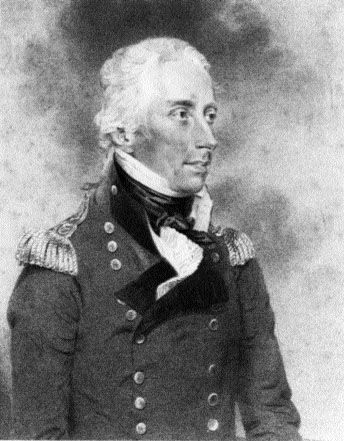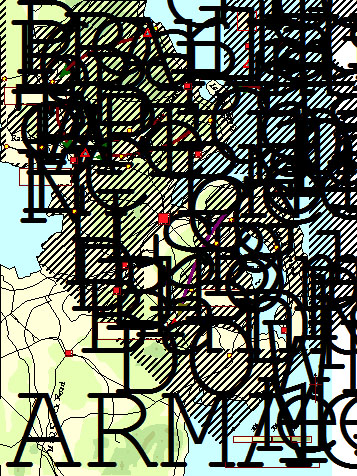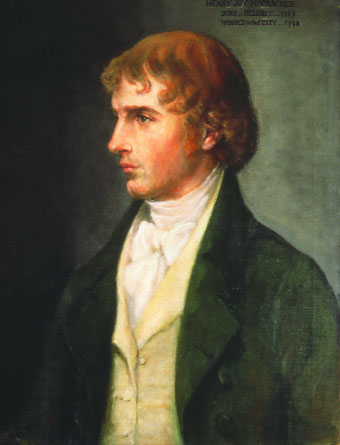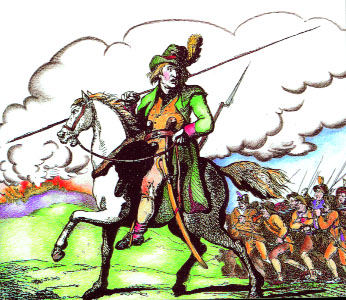1798 in the North
Published in 18th–19th - Century History, Features, Issue 2 (Summer 1998), The United Irishmen, Volume 6On 26 May 1798, the very day on which rebellion erupted in Wexford, a despondent Wolfe Tone offered to serve Bonaparte in India. He had just heard the rumour that the Toulon fleet was bound for the East and not for England. Learning some days later that Lord Edward Fitzgerald had been arrested, he recorded that he did not know him very well, but he suspected that the poor fellow had been premeditating an attack on Dublin. His detachment startles us, until we remember why he was in Paris; he naturally regarded any outbreak in Ireland as premature. It was 18 June, and the Wexford rising almost over, before accurate and detailed news of it reached him and his reaction was one of surprise:
In all this business I do not hear one syllable about the North, which astonishes me more than I can express. Are they afraid? Have they changed their opinions? What can be the cause of their passive submission, at this moment, so little suited to their former zeal and energy?
His bewilderment was understandable. For three weeks the sullen torpor which had descended on the North had astounded all Ireland, including Dublin Castle, where Edward Cooke, the Under-Secretary, found it ‘unaccountable’. Belfast had, after all, been the radical cradle of the United Irish movement in 1791. It was at first a constitutional pressure group, but when, in the years after the outbreak of war with France, it was succeeded by the ‘new system’, an underground revolutionary army had been recruited and organised there, waiting only for a French invasion to proclaim a republic. This United Irish army had reached its greatest numerical strength in the summer of 1797, when rebellion had seemed almost certain. Since then it had been slowly declining, though the province of Ulster had been in a state of barely-smothered civil war. When the mail coach signal came on 23 May 1798, the military braced themselves for revolt in the North. Instead it broke out behind their back in Wexford.
General George Nugent, who held the northern command, was a figure far removed from the caricature familiar in Irish accounts of 1798. Urbane and well connected (he was, among other things, MP for Buckingham), Nugent was in contrast to his predecessor, General Lake, the martinet who was now commander-in-chief in Ireland.

Lt. Gen. Sir George Nugent (National Army Museum, London)
Lake had held the radicals of Belfast in utter contempt, but Nugent had made a good impression, and thought well enough of the town and its society to have his wedding there. Patient and diplomatic, he managed to negotiate the handing over of four of the old Volunteer cannon (the fifth gun was spirited away, to reappear at the battle of Antrim).
Enthusiasm for French Revolution waning
This diplomacy paid dividends at a time when the attitude of the Protestant Dissenters was rapidly changing. Some of the most vociferous of the Belfast merchants were deserting the reform cause for economic reasons. Enthusiasm for the French waned when the Revolution degenerated into the Terror, and cooled altogether when the French Republic attacked Holland and Switzerland, and threatened war with the United States. Among the first to draw attention to this altered climate were the clergy of the Church of Ireland. Thomas Percy, bishop of Dromore (more celebrated as the author of the Reliques of Ancient English Poetry) told his wife: ‘A wonderful change has taken place among the republicans of the North, especially in and near Belfast. They now abhor the French as much as they were formerly partial to them, and are grown quite loyal’. Dean Warburton gave it as his opinion that the ‘cunning and wary Northerners can see no revolution can be effected without foreign aid (of which they now despair)…I think the Northern Dissenter will now quietly be a spectator of that destructive flame which he himself originally kindled up, and will take no active part in the present attempt’.
Just over a week later he seemed to be proved wrong. On Thursday 7 June, a day of warm sunshine and cloudless skies, County Antrim rose. Nonetheless, General Nugent had had two precious weeks to prepare for the event. Intelligence was flowing in which enabled him to estimate the extent of the threat; his chief problem was that his resources were being weakened by continual detaching to the South, and promised reinforcements from Scotland and England were slow to arrive. When they did, they were cavalry and it was infantry he needed. Under the surface calm there had been an agonising indecision in what was left of the United Irish leadership. Robert Simms, the Belfast merchant who was the chosen adjutant-general for County Antrim was convinced that rebellion would not succeed without the aid of French arms. Assembling the colonels of the various United Irish regiments was a difficult and perilous business in conditions of martial law and curfew. When they did meet, they could not agree. Simms procrastinated, and, because he could not obtain a consensus, he put off liaising with his opposite number in County Down, the Revd. William Steel Dickson, until it was too late. Some of his officers, like James Hope, began to suspect him of treachery. There was considerable doubt about the other counties and a last crisis meeting of the provincial committee held in Armagh on 29 May denounced the leadership and resolved that if the colonels could not agree next day on insurrection they should all return to their occupations and deceive the people no longer.
Fatal thread of indecision
The fatal thread of indecision ran through all that followed. When the Antrim colonels met at Parkgate on 1 June they were disturbed by a party of dragoons who rode through the village by chance. Reassembling in a straggling fashion in Templepatrick, the conspirators again failed to agree and Simms abruptly resigned his command. No-one had been found to replace him when they met again on 3 June at the Sheep Ree, a desolate spot on Ballyboley mountain. A vote was taken, and it was decided to postpone an insurrection until the French arrived. When this verdict reached the Antrim village of Ballyeaston, the crowd broke into an uproar and on the spot elected Henry Joy McCracken, a young Belfast cotton-master, to be the overall commander and lead them into action.
McCracken had hours rather than days to draw up his strategy, and given the circumstances it was worthy enough for an amateur. He knew that the magistrates were due to meet in Antrim town on 7 June. He sent orders to all the United Irish units in the county to appear in arms that day and overwhelm their local garrisons. He arranged for Randalstown to be attacked, while he and James Hope, with the men of Belfast and South Antrim, would lead the main attack on Antrim town, which was strategically located on the route from Belfast to Ballymena and Derry. A reserve army was to assemble on Donegore Hill, just east of the town. Late on 6 June he issued his famous order: ‘Army of Ulster, tomorrow we march on Antrim…’.
‘The turnout’
At first all went like clockwork. The problem was that General Nugent knew more about the plan than any insurgent under McCracken’s command, thanks to Nicholas Mageean, a young Catholic farmer from County Down who was a member of the provincial committee. Mageean had been providing information to the authorities for some time, and on Wednesday 6 June he sent an urgent warning of the imminent revolt. At daylight Nugent alerted Major Seddon, who commanded the small garrison in Antrim, and promised to send him reinforcements. Taking a carefully calculated risk, he dispatched a mixed column of regulars, militia and yeomanry from Belfast, and another from General Goldie’s command at Lisburn, in the hope of scotching the rebellion on the first day without endangering Belfast.
Meanwhile what the country people would long remember as ‘the turnout’ was happening all over the east of the county. In the port of Larne the United Irishmen had already attacked the garrison and loyalists during the night, and thousands were in arms on the peninsula of Islandmagee and in the area about Ballycarry, moving westward towards Donegore.

(Matthew Stout)
Further north on the coast a host assembled on Bellair Hill near Glenarm, commanded by the Presbyterian minister, the Revd Robert Acheson, in a green jacket faced with yellow, white breeches, black hose and silver-buckled shoes. In the centre of the county disciplined bodies of armed men surged into Ballymena, where they would be joined next day by the men of North Antrim, led by young Richard Caldwell. The cradle of the rebellion, however, was the broad fertile valley of the Sixmilewater, where every village that morning produced its quota of men, singing and cheering as they marched to swell the vast concourse on Donegore Hill. Among them was James Orr, the rustic ‘bard of Ballycarry’ who vividly described the scene as they awaited Nugent’s redcoats, bright in arms What impressed him most was the noise:
The red-wud, warping, wild uproar
Was like a bee scap castin
[like a bee-hive overturned]
Orr’s dialect poem is touched with sardonic humour. Many of the rebels were like himself reluctant foot-soldiers, still declaiming the lofty ideals of the French Revolution, but in truth rather frightened and confused about their leaders’ aims. No longer, as in the heyday of the Volunteers, were they officered by the gentry and their social superiors. Through the reading societies and the Northern Star they had discovered Tom Paine and educated themselves on the Rights of Man. While the merchant class were tempted by the economic advantages of union with Britain, rather than separation, the artisans, mechanics and rural labourers were beginning to think more like trade-unionists. James Hope was the outstanding example, a socialist ahead of his time.
![The Battle of Ballynahinch, 1798 [detail] by Thomas Robinson. (Office of Public Works)](/wp-content/uploads/2013/02/1798-in-the-North-3.jpg)
The Battle of Ballynahinch, 1798 [detail] by Thomas Robinson. (Office of Public Works)
Despite his overwhelming superiority in numbers, McCracken waited far too long before entering Antrim through the Scotch Quarter and the tiny garrison had plenty of time to prepare for a heroic defence. Meanwhile the two army columns had a rendez-vous two or three miles to the south. Eager for action, Colonel William Lumley, the Etonian who commanded the 22nd Dragoons, obtained permission to move swiftly ahead, and entering the town by the Massereene Bridge, he made the now familiar mistake of launching a cavalry charge at the long pikes. The dragoons took heavy casualties, Lumley was severely wounded, and his cavalrymen were raked with musket fire by Hope’s sharpshooters as they retreated. However, it is probably true that Lumley’s costly action prevented the insurgents from occupying the whole town, and put them on the defensive. Confusion now began to overtake the insurgent columns arriving from the north and west. The fifth Volunteer cannon, exhumed from under the pews of Templepatrick Presbyterian church, proved a singular disappointment.
When Colonel Durham arrived with the main force he bombarded the town for half an hour, before advancing in to it with the Monaghan Militia, who slew all they met, rebel and welcoming loyalist alike. In two or three hours the battle was over, and McCracken’s army had been repulsed on the first day. As the news of Antrim was received there, the huge assembly on Donegore Hill melted away. The rebellion was not over, of course. Ballymena, to the north of Antrim, was occupied by contingents of United Irishmen from the surrounding areas, and became a republic for three days, while its Committee of Public Safety tried desperately to reconstruct a rebel high command. In such towns, however, there was by now a distinct mood of damage limitation among the leading citizens who still had influence over the armed multitudes. When Colonel Clavering, acting without authorisation, offered an amnesty, it was accepted with alacrity, and the roads leading out of Ballymena were piled high with the discarded arms. At Glenarm Acheson had already saved his life by surrendering on terms.
Saintfield
Nugent had been lucky. Belfast was quiet and likely now to remain so. In County Down confusion had reigned in the United Irish leadership after the arrest of Steel Dickson on 5 June, but some of the younger officers, including several probationers for the Presbyterian ministry, took the initiative. David Bailie Warden, who was later to have a distinguished career as a scholar and diplomatist in America, made an unsuccessful attempt on Newtownards, and then went on to rouse north Down and the Ards peninsula. On Saturday 9 June, Colonel Chetwynd-Stapylton and a detachment of his regiment, the York Fencibles, were ambushed at Saintfield and forced to retreat after losing several of his officers, including his own cousin, Captain William Chetwynd, a circumstance which has misled some chroniclers.
This initial victory (the only one in the Northern rebellion ) put great heart into the County Down United Irishmen. After Nugent prudently withdrew all his outposts, most of east Down was at their mercy. A considerable force of the Ards men, equipped with cannon taken from ships in Bangor harbour, marched round the head of Strangford Lough and west towards the centre of Down, where they joined insurgents from the Saintfield and Ballynahinch area at the Creevy Rocks. Here on Pike Sunday they listened to a sermon preached by the Revd. Thomas Ledlie Birch, and next day they elected Henry Monro, a young Lisburn linen draper, as their commander. Nugent hoped to keep open his line of communication with Dublin through the centre of the county for as long as possible, but the rebels, pushing westward, occupied Ballynahinch and established their main camp at Montalto, the estate of the Earl of Moira.
Ballynahinch
On the morning of Tuesday 12 June, reassured by the favourable reports from Antrim, Nugent judged it safe to take the field against them with a large force accompanied by half a dozen six-pounders, two howitzers and ammunition wagons. The day was very hot and the progress of the column was slow, though soon to be traced by the smoke of burning farmsteads. Nugent found Saintfield completely deserted and pressed on to Ballynahinch, where he dislodged a rebel outpost on Windmill Hill, and established his headquarters there. He had ordered the Argyll Fencibles stationed at Downpatrick under Colonel George Stewart, to join him and cut off the probable line of rebel retreat. As darkness fell his artillery began the bombardment of Montalto and Ednavady Hill.
What happened there during the night is still unclear and a matter of debate among historians. Large numbers of the insurgents slipped away under the cover of darkness, many demoralised by the cannonade, but there was also a disagreement about tactics. The tired and hungry Monaghan Militia had looted the town and become very drunk. Some of Monro’s officers argued for a night attack while the troops were in this state, but were over-ruled by Monro, who decided on an attack at dawn.

Henry Joy McCracken by Sarah Cecilia Harrison. (Ulster Museum)
This was carried out with great courage and determination. The Monaghans were driven back through the streets, their adjutant was killed, and several of their field-guns were taken, but as so often happened in 1798, the insurgents were confused by their own lack of military expertise. Mistaking the bugle calls of the retreating infantry for a signal of the arrival of reinforcements, they faltered, and the British officers, realising what was happening, swiftly ordered the counter-attack .

Henry Munro, Chief of the Irish Rebels by Thomas Rowlandson.
Soon the United Irishmen were streaming away from Ballynahinch in all directions, only to be cut down by the pursuing cavalry. No quarter was given, and among those who perished in this way was Betsy Gray, a young girl who had accompanied her brother and fiancé to the rebel camp. In time she became a figure of legend, an Ulster Joan of Arc, who was depicted as riding into battle on a white horse and holding aloft a green banner.
The battle of Ballynahinch was the most serious encounter of the northern rising, but it was not on the scale of New Ross or Vinegar Hill in Wexford. The battles of Antrim and Ballynahinch were followed by harsh retribution. McCracken and Monro were captured and hanged, along with scores of less prominent rebels. It was to a large extent a Presbyterian rebellion, and it marked the end of the Dissenters’ sense of political exclusion which had strengthened their alliance with Catholics elsewhere in Ireland.
![The Hanging of Henry Joy McCracken by John Carey [1896]. (Ulster Museum)](/wp-content/uploads/2013/02/1798-in-the-North-6.jpg)
The Hanging of Henry Joy McCracken by John Carey [1896]. (Ulster Museum)
A.T.Q. Stewart was formerly Reader in Irish History at Queen’s University, Belfast.
Further reading:
A.T.Q. Stewart, The Summer Soldiers: Antrim and Down in 1798 (Belfast 1996).
















